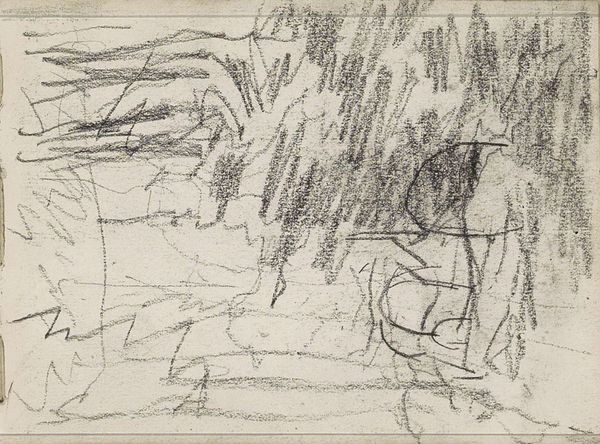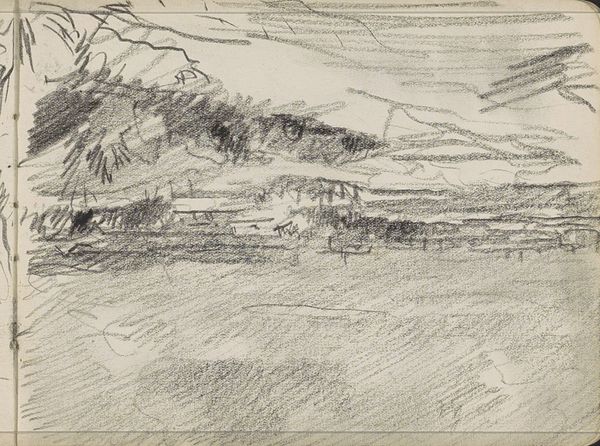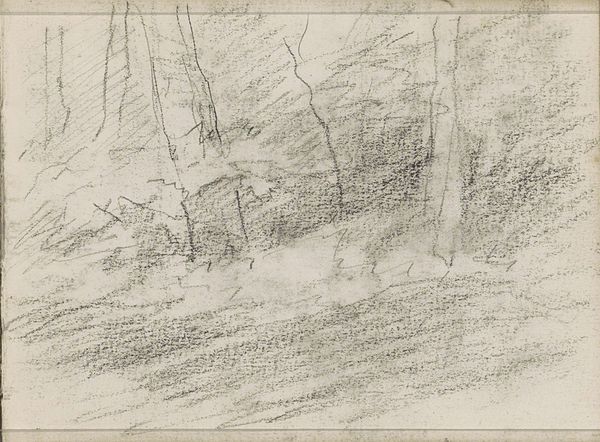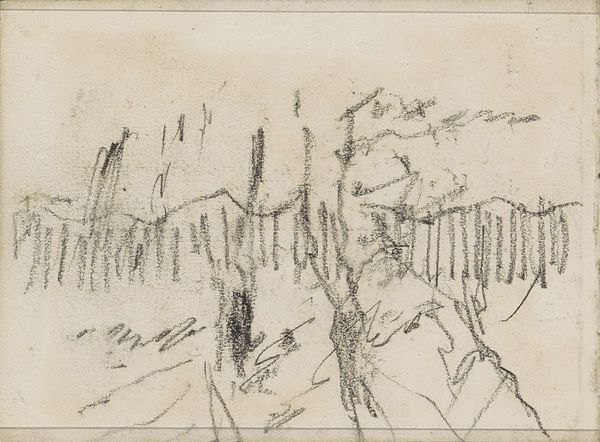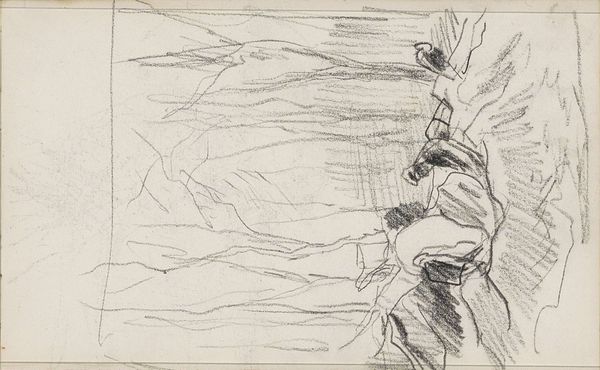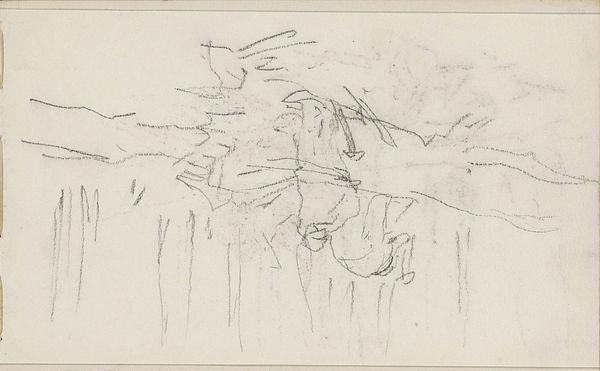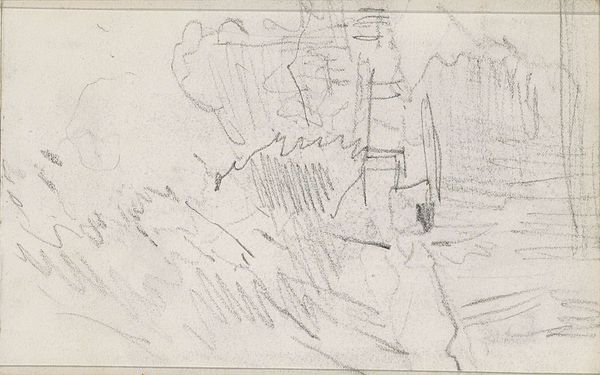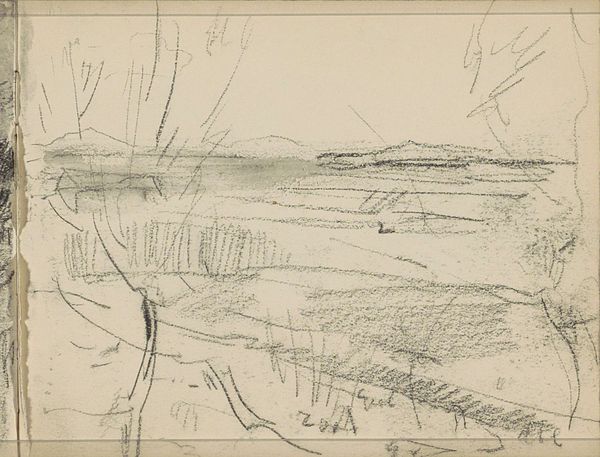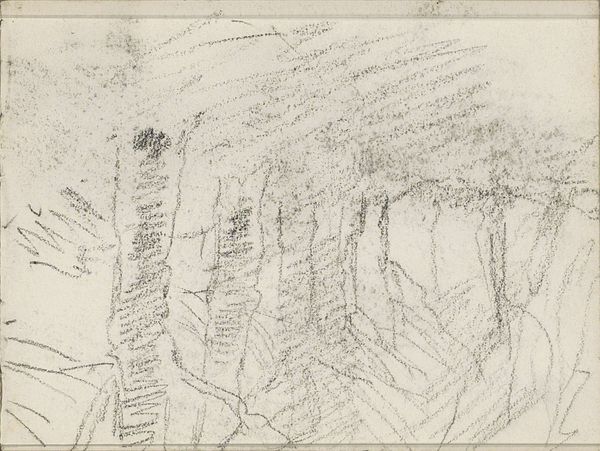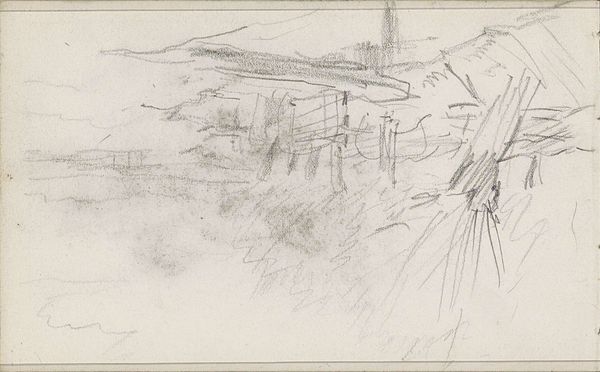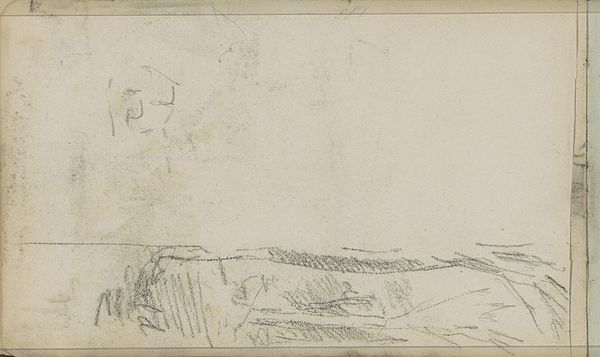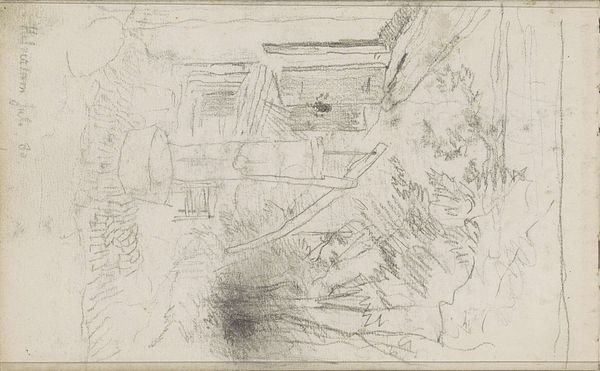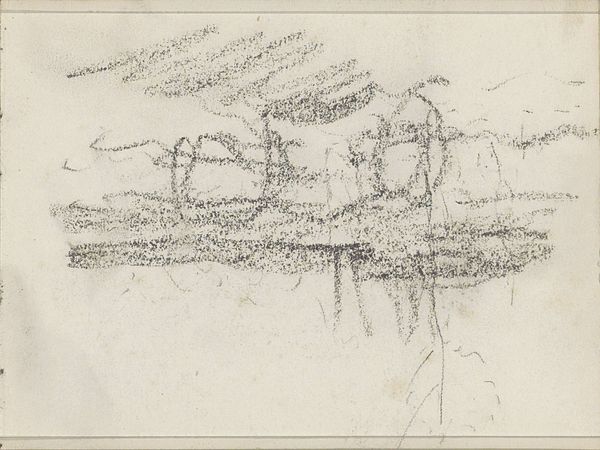
drawing, pencil
#
drawing
#
impressionism
#
landscape
#
pencil
#
realism
Copyright: Rijks Museum: Open Domain
Curator: Looking at Anton Mauve's pencil drawing, "Sloot in een landschap", dating from somewhere between 1848 and 1888, currently held at the Rijksmuseum, I immediately feel a sense of transience. What is your first impression? Editor: Stark. It evokes a feeling of starkness and quietude, perhaps melancholy. The monochrome palette and sketch-like quality lend it a sense of something unfinished, something caught in a moment. Curator: That unfinished quality speaks to Mauve's engagement with the emerging impressionistic style, but rooted firmly in a realist tradition. Consider how the social realities of landscape – ownership, access, labor – shaped its reception then, as it still does today. How does access to the land play into this depiction? Editor: I find the composition subtly suggestive. The 'sloot,' or ditch, and implied path, act as a conduit leading our gaze deeper into the scene. But this raises critical questions of land use: for whom is this path open? Is it an idealized space of leisure or a site of rural labor? I think of contemporary indigenous struggles and colonial claims. Curator: Exactly. And in the 19th century, there's an implicit dialogue between city and country, industry and nature. Art became increasingly codified by these binaries and also complicit with those divisions, shaping both artistic and societal values. I wonder if it romanticizes the rural. Editor: It is beautiful, isn't it? The expressive lines communicate wind rustling through grass and the play of light on water. But thinking through the social dimensions complicates that immediate appeal. How were Dutch artists responding to French painters, especially as the latter began influencing international artistic style? How were national and cultural identities being formulated in tandem with aesthetic movements? Curator: Mauve’s approach, placing him squarely in the Hague School of painters, makes clear his contribution to a visual vocabulary that both romanticized and observed closely the Dutch landscape. The drawing provides, through its quiet, fleeting qualities, something of a radical possibility, given his social station. Editor: Thank you, that perspective gives a fresh insight on that particular piece. Curator: The pleasure was all mine, I found this piece to be an exciting moment in realism.
Comments
No comments
Be the first to comment and join the conversation on the ultimate creative platform.
